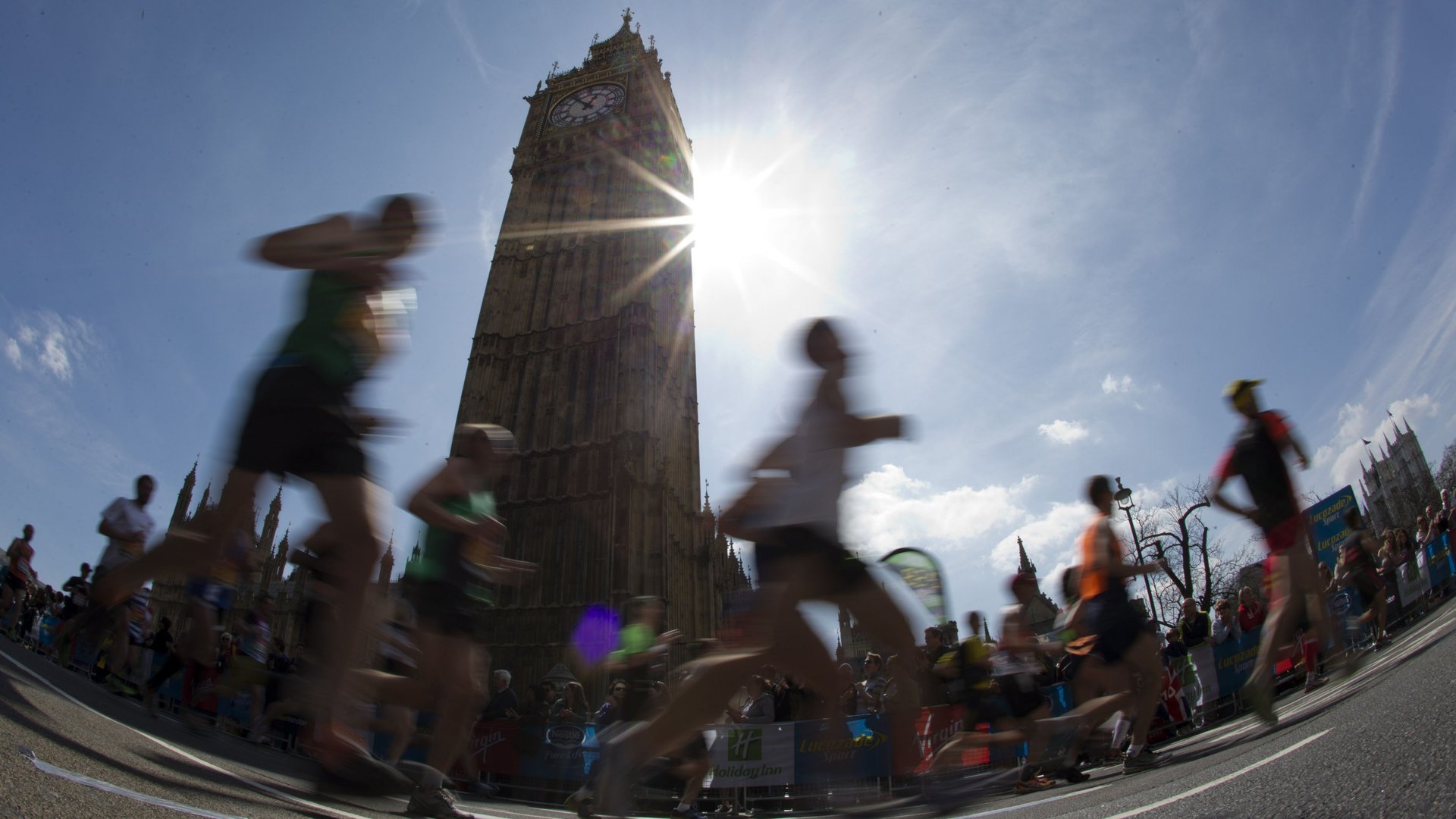Are we a culture of joyless over-exercisers?
Here is a thought experiment. Assume that every hour you run you extend your life by an hour.


Here is a thought experiment. Assume that every hour you run you extend your life by an hour.
I have chosen a one-to-one ratio between the increase in longevity from running and the time running because higher ratios lead to the immortality paradox. Lazarus aside, the all-cause mortality for Homo sapiens is 100 % and will remain so for the foreseeable future.
This arithmetic means that at one point you will literally be running for your life: your life being extended precisely by the time spent running. But ignore this logical fallacy.
You run an hour every day for 40 years. Your life is extended by 1.67 years. Your costs are a new pair of running shoes every three months, which might even be covered at zero co-payment by insurance if USPSTF gave running a grade A or B recommendation.
A back of the envelope calculation, assuming the shoes cost $ 80, yields cost per life year of roughly $7664. There is, of course, more nuance. I am not including injuries that may result from running. I am not discounting time: I am assuming we value an hour now the same as an hour 40 years from now.
I am also not factoring the costs avoided of treating late stage cardiovascular disease, which must be balanced against the additional social security checks that the individual will draw because of living longer, not to mention the costs of treating diseases of extended longevity such as cognitive impairment, Alzheimer’s disease, recurrent falls.
But please continue to indulge my approximation. The point is not precision of economic calculations but a principle.
$7664 for an additional life year. Compared to the benchmark of $50, 000 per quality-adjusted life year that’s a bargain!
Was it worth it then?
You have spent 14,560 hours on treatment (running), time in which you could have read Moby Dick, listened to Mozart’s Requiem or watched re-runs of Breaking Bad.
Don’t get me wrong. I think running is its own good. It increases your endorphins and makes you feel good whilst you blissfully listen to the soundtrack from Chariots of Fire dreaming that you are an Olympian athlete (you might want to change tunes after the 501st hour).
The point is that healthy living consumes time. If enjoyed for its own sake it has value. If one obsesses over health (healthism) that obsession also costs. It can make people terribly unhappy as they stare at the shelf deciding between the 180 caloric scone and the decidedly deadlier 205 caloric carrot cake. It reduces their chances of getting dinner re-invitations for relentlessly questioning the host about the sugar content of the rice pudding.
Healthism is an avenue for subliminal narcissism. There is something seductively deterministic and morally appealing about eating like a cheese-fearing vegan rabbit and looking better, living longer and getting 50 % of the insurance premium back thanks to Affordable Care Act’s Zen-sounding Wellness provisions.
In short, healthism is the new puritanism. The old puritans worked for God’s glory with a famed work ethic which, according to Max Weber, might have been the chiefly responsible for the success of capitalism.
The righteous, mirthless, po-faced, lycra-clad new puritans are forever punching numbers in to risk calculators and obsessing over arbitrary thresholds of LDL-cholesterol whilst watching the Dr. Oz show with the fastidiousness with which the old puritans internalized Leviticus, lest they miss another opportunity for a miniscule relative risk reduction.
To slightly paraphrase an old saying: life is what happens when you are busy lowering your cholesterol.
Again don’t get me wrong. I am not advocating we eat double cheeseburger for breakfast and tea. There is nothing I enjoy more than two glasses of craft beer after an hour of receiving resounding thrashing playing squash, regardless of what that combination of activities does to my chylomicrons.
But between morbid obesity and a morbid obsession with health there surely must be a healthy middle ground.
This post originally appeared at The Health Care Blog. Follow @thcbstaff on Twitter.